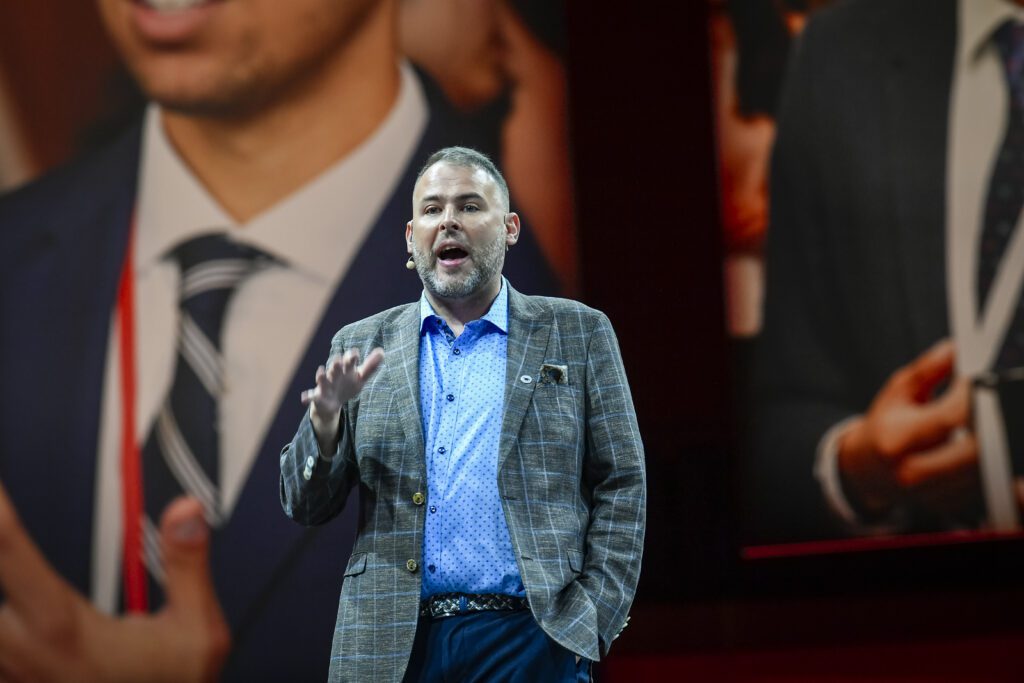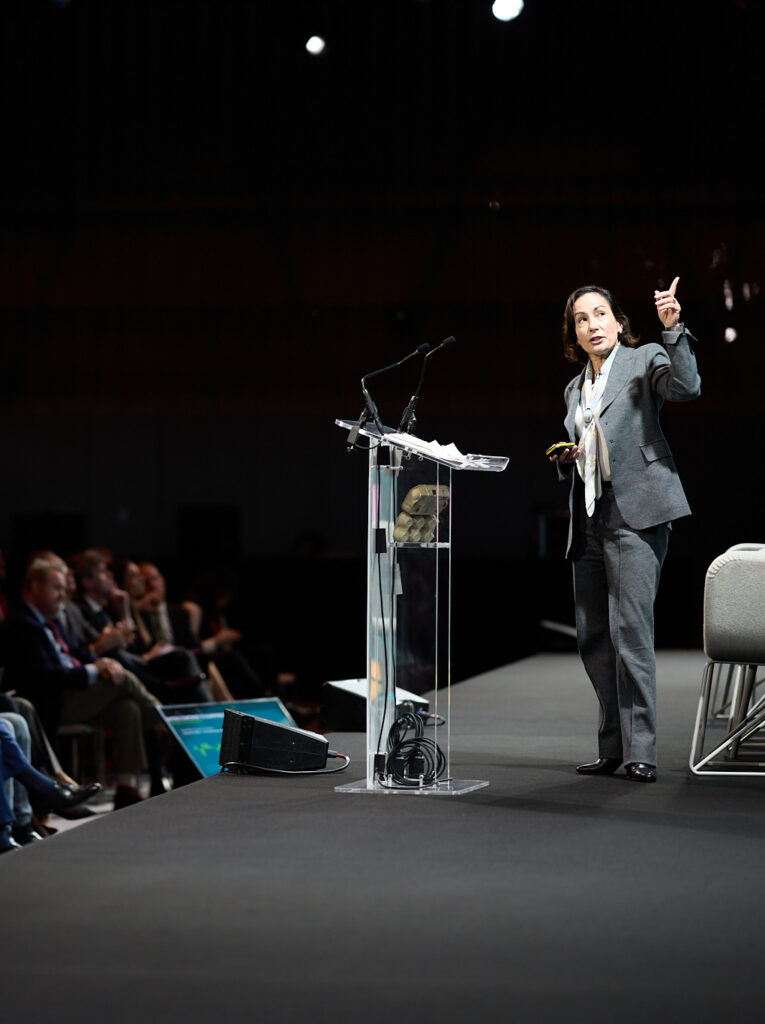The Trends Shaping Events in 2025
The Confident Keynote

The vast majority of people rank fear of public speaking in the number one spot of fears. Delivering a keynote speech at a conference can be one of the most nerve-wracking experiences with pressures to engage your audience and deliver an impactful message. Here are the essential elements to guide you through delivering a confident keynote that informs and inspires.
At Broadsword we are firm believers that one speech can make a difference. That events and communications can inspire audiences, create connections, foster talent and create change.
But how can speakers communicate the impact they need to?
Understanding Your Audience
How to keep an audience engaged is a challenge all event and communications professionals face and the solution often starts with understanding who is at the event. Tailor your message to address the audiences’ interests, challenges, and aspirations to ensure your keynote resonates with them. Preparing for a keynote shouldn’t be just writing a speech, but also researching the event’s purpose and its audience to guide your content and tone.

How to speak confidently
Focus on the value you bring to the audience and embrace the idea that you are there because you have something of value to offer to the audience.
We spoke to RADA Business, speaker coaching, about confidence on our podcast. The key theme was that confident speaking is all about mindset. Of course you will get nerves when you step onto a stage, but these nerves aren’t necessarily negative as they indicate that you care about the arena you are stepping into. Athletes feel stress before a race, actors feel stress before a performance — and this chemical shift within your body is heightening your senses, setting you up for success.
Of course, distress is what we want to avoid. This sets us up for fight or flight — making our breathing quicker and our heart beat faster. There are techniques to manage your nerves such as grounding exercises and breathing exercises that calm our body down. Our instinct is to go faster when we are nervous, so it’s key to work against that and slow down your speaking pace. Try taking a pause every time you get to a full stop and you’ll find everything else starts to relax.
Timing is everything; how to structure a keynote
When we are engaged by listening to a speaker, one unit of our attention that can be held is about 20 minutes (even less when we aren’t interested). A keynote speaker’s role is to utilise this 20 minutes effectively.
Thinking of your speech this way forces you to structure what you are saying and think about the audience’s engagement levels, rather than just surviving five minutes at a time. A keynote tends to be 45 minutes which gives you the perfect amount of time to share two points that will hold your audience’s attention, with a transition where the audience can establish a new focus, as well as an intro and an outro that summarise the idea that ties everything together.
Regardless of how many brilliant notions you have to share with the audience, they will subconsciously try to pick out just a few to make sense of the entire thing. You may have heard that no one can remember more than three points so communicating a single central idea is enough to keep an audience’s attention.

Utilising storytelling in communications
Of course, the structure of a keynote should have a clear beginning middle and end, which is where storytelling comes in. Effective communication and storytelling takes a lot of skill and you can start by breaking down what the audience can perceive when you are in front of them. This can be everything from visual communication including eye contact, gestures, and posture, to your vocal story which covers pace, pitch, and projection of your voice.
The fundamental part of storytelling is that it evokes emotions and connects to the audience, rather than simply delivering facts and data. The goal is to make the audience feel involved rather than just passive listeners. This is where your verbal story (the content of your presentation comes in). Videos and visual aids as well as polling can assist you here but the crucial component to focus on is avoiding a data dump. Circling back to the idea that your content and thoughts are valuable to the audience — you don’t want to dump your thoughts; you want them to land.
Be Authentic
Authenticity is key to establishing a connection with your audience. Speaking on a topic you are passionate about can make your message land more successfully. Consider including personal stories and experiences to add authenticity to your keynote. Your audience are humans too and want to feel a connection.
Confidence and authenticity are often intertwined. When it comes to speaking confidently, having a mindset that allows you to be the most authentic version of yourself is key. For example, it’s okay to say you don’t have the answer to a question — this actually keeps your status up in the room as an authentic, and confident speaker.
Related insights

Building Accessible Events: Lessons from Broadsword’s DEI Day

